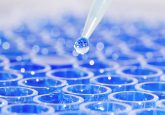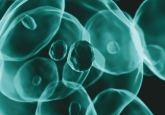All-in-one economical Lab-on-a-chip developed by Stanford Scientists

A team of scientists from Stanford University School of Medicine (Stanford, CA, USA) have developed an economical and sustainable diagnostic ‘lab on a chip’ device that could potentially improve diagnosis of diseases worldwide.
The team published a paper describing the technology recently in the Proceedings of the National Academy of Sciences.
The latest technology could help improve disease diagnosis particularly in the developing world where diagnosis of diseases are especially challenging due to limited access to early diagnostics.
“Enabling early detection of diseases is one of the greatest opportunities we have for developing effective treatments. Maybe $1 in the U.S. doesn’t count that much, but somewhere in the developing world, it’s a lot of money.” Commented lead study author Rahim Esfandyarpour.
With production costs as low as 1 cent per chip, it is hoped that the cheap device will help improve access to early medical diagnostic.
Utilizing microfluidics, electronics and inkjet technology Esfandyarpour and colleagues created a two-part system consisting of a microfluidic chamber accommodating cells made from silicone, which sits above a recyclable electronic strip.
The second part of the chip consists of using a regular inkjet printer that can be used to print the electronic strip onto a polyester sheet utilizing nanoparticle ink.
“We designed it to eliminate the need for clean-room facilities and trained personnel to fabricate such a device. One chip can be produced in about 20 minutes commented Esfandyarpour.
The chip can handle samples of small volumes for a variety of assays. The team have also demonstrated the devices ability to count and isolate rare cells, in addition to capturing single cells from a mix.
Existing methods of analyzing and counting cells usually involve using a flow cytometer machine, a single unit of which can cost up to $100,000 excluding considerations of additional operational costs
“The technology has the potential to not only advance health care, but also to accelerate basic and applied research. It would allow scientists and clinicians to potentially analyze more cells in shorter time periods, manipulate stem cells to achieve efficient gene transfer and develop cost-effective ways to diagnose diseases” remarked Esfandyarpour.
It is hoped that the technology will help change the way instruments in the lab are used in medical diagnostics.
“I’m pretty sure it will open a window for researchers because it makes life much easier for them—just print it and use it,” concluded Esfandyarpour.
Sources: Esfandyarpour R, DiDonato MJ, Yang Y et al. Multifunctional, inexpensive, and reusable nanoparticle printed biochip for cell manipulation and diagnosis. DOI: 10.1073/pnas.1621318114 (2017); https://med.stanford.edu/news/all-news/2017/02/scientists-develop-lab-on-a-chip-that-costs-1-cent-to-make.html






